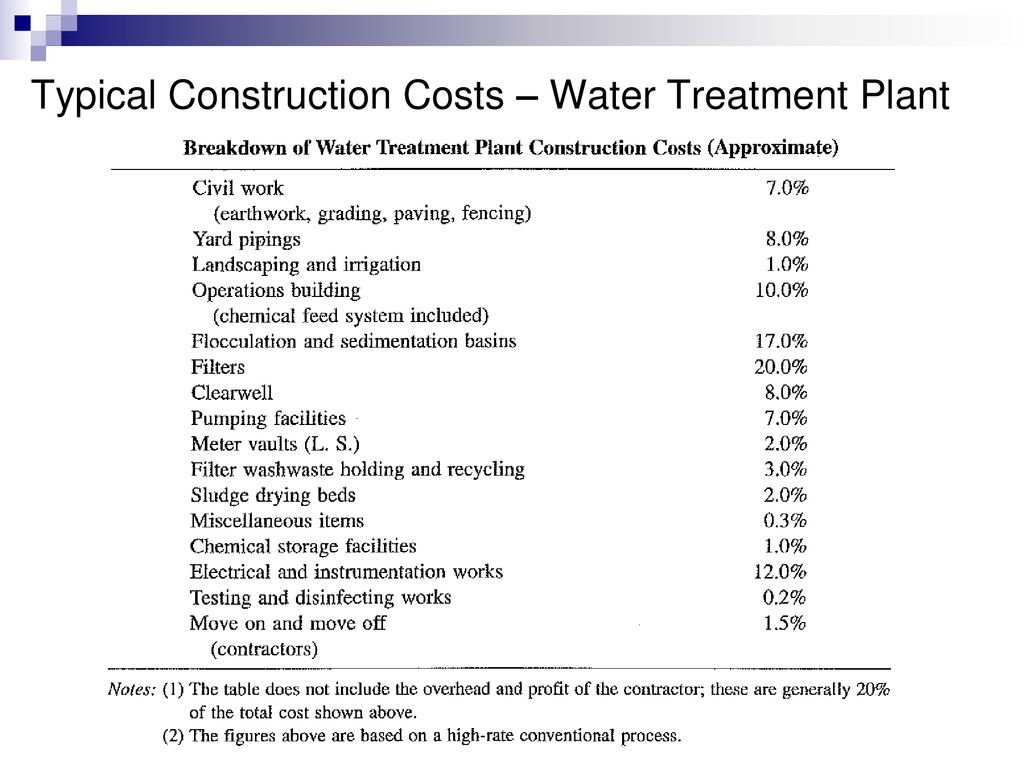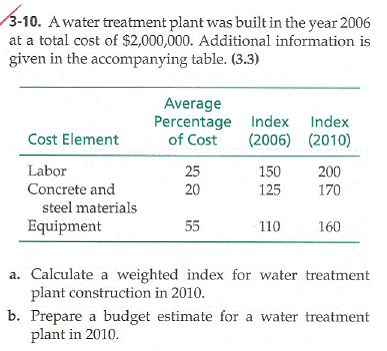Nobody likes water quality issues. It’s problematic when you’re trying to draw a glass of clean H2O from the tap and it tastes off, or when your skin flares up in a rash after being exposed to the shower. But there are ways around these problems. A water treatment system can improve water quality instantly—and at several levels depending on the system — whether you need more advanced solutions after that depends on what exactly you want to remove from your water. Do you have a deeper understanding of where it all goes?
When I started working in this industry, I heard the phrase “build a treatment plant” thrown around quite often. However, several years into my career, and this statement still did not make sense to me. I asked several engineers about it, and no one could give me a good answer. This is when I set off on a mission to find out what exactly it meant to “build a water treatment plant, cost of building a water treatment plant, how much to build a water treatment plant.”

How much does it cost to build a water treatment plant
The cost of building a water treatment plant depends on the size and complexity of the system. The most basic systems, which include filtration and chlorination, can be installed for less than $10,000.
The average cost of building a wastewater treatment plant is about $3 million for a small community or $16 million for a large one. This includes equipment, labor and other expenses such as materials.
The cost to operate and maintain a wastewater treatment plant varies depending on factors like size and age of the facility. For example, small plants in good condition can be operated for less than $20 per day while larger facilities may require up to $50 per day.
How much does it cost to build a water treatment plant?
The cost of building a water treatment plant depends on the size, complexity and location of the facility. Some common factors that affect the cost of construction include:
The size of the plant (square footage). A larger plant will require more equipment, more energy to operate and more labor hours to complete construction. It will also take longer to construct. Smaller plants can be built for less money than larger ones.
The type of treatment system used (e.g., sand filtration, activated sludge, etc.). Different types of systems require different types of equipment and monitoring equipment. The type of system used will also determine how much maintenance will be required over time.
Where you’re building your facility (i.e., urban versus rural areas). Urban areas generally have higher construction costs because they have stricter regulations regarding runoff and pollution prevention devices such as sedimentation ponds or stormwater management facilities (SWMF).
The cost of building a water treatment plant depends on the type of water treatment system and the size of the facility. The simplest systems may cost as little as $25,000 while larger facilities can cost hundreds of thousands or even millions depending on the complexity of the system.
The most basic type of water treatment plant is an activated sludge system. These are relatively inexpensive to build and operate, but they can also be very effective at treating wastewater. A typical activated sludge system includes an aeration basin for mixing the wastewater, a settling tank for removing solids from the water, and a final clarifier where any remaining solids will settle to the bottom. This type of system is used by many small towns and cities to treat their wastewater before discharging it into rivers or lakes or pumping it back underground into aquifers for storage until it can be reused as reclaimed water.
Another common type of wastewater treatment plant is called a trickling filter system. These plants involve a series of tanks where each tank has a different function in removing pollutants from the water before it enters another tank where more work is done on removing pollutants, then finally discharging treated water into streams or ponds.
Water treatment plants are used to purify or clean water that is to be used for drinking, bathing or other purposes. A water treatment plant serves as a major source of clean drinking water for a large number of people living in an area.
Water treatment plants can be built at home or at commercial sites. They are usually large and complex systems that need a lot of money to build and maintain. The cost of building a water treatment plant depends on several factors including the size, type, location and complexity of the system.

The cost of building a water treatment plant can also vary depending on where you live. For example, if you live near an ocean or lake, chances are that your municipality will already have a treatment facility in place so it would not cost much to build one from scratch. However, if you live far away from any bodies of water then it will cost more money to build your own facility from scratch because construction costs tend to be higher in such areas due to transportation costs and labor costs being higher as well.
You should also consider whether or not you want your own facility built or whether you would rather hire someone else to do it for you. If you decide on hiring someone else then keep in mind that they will charge by volume handled per
The cost of building a water treatment plant depends on the size of the project and the type of water treatment equipment used. The following guide provides an overview of the costs associated with designing and building a complete water treatment facility in the United States.
Cost breakdown for a water treatment plant
The cost to design, build and operate a water treatment plant varies significantly based on the size of the facility and the type of equipment used. It is important to note that these costs do not include maintenance or operational costs, which may be substantial over time depending on how much capacity your system requires.
For example, if you need five million gallons per day (MGD) of capacity, then your total initial investment will be $50 million to $100 million plus an additional $10 million per year in operating costs — but if you only need 500,000 gallons per day (MGD), then your investment will only be $5 million plus an additional $500,000 per year in operating costs — less than 10 percent of what it would cost for a larger system!

How much to build a water treatment plant
The cost of building a water treatment plant varies greatly depending on the size, complexity and location. It can take between one and three years to construct a water treatment facility.
Costs will be highest in areas where there is little or no infrastructure to support it, such as remote locations or developing countries. The cost of building a wastewater treatment plant also depends on its size, complexity and location. It should take between one and three years to construct a wastewater treatment facility.
The cost to run a wastewater treatment plant depends largely on the type of system used and how much waste it processes each day. In general, most facilities charge per gallon of treated water produced or per pound of solid waste removed from the water supply.
Water treatment plants are large facilities that are used to purify water before it is used by consumers. There are many different types of treatment plants and methods of treating the water. However, in most cases, the process involves breaking down harmful chemicals and bacteria in the water through a chemical or physical process.
The cost of building a water treatment plant varies greatly depending on its size and type. Some plants can be built for under $100,000 while others cost millions of dollars. The average cost of building a water treatment plant is $1 million.
Costs to Run a Wastewater Treatment Plant
Wastewater treatment plants are also known as wastewater treatment facilities or WWTFs. These facilities treat wastewater so that it can be safely returned to nature without causing harm to wildlife, humans or the environment. Wastewater treatment consists of several steps including primary, secondary and tertiary processes.
The average cost to run a wastewater treatment plant is $2 per 1,000 gallons treated per day (gpd). This equates to about $60 per 1,000 gpd for residential use and about $50 per 1,000 gpd for commercial use
The cost of building a water treatment plant depends on the size, complexity and location. A small facility serving less than 500 people can cost as little as $500,000, while a large facility serving thousands can cost millions of dollars.
The cost of running a wastewater treatment plant varies depending on whether you own it or lease it from a utility company. If you own your own facility, you’ll need to pay for maintenance and utility bills each month. If you lease from a utility company, they will charge an annual fee that includes maintenance and utilities.

The cost to run a wastewater treatment plant also varies based on how much water is processed each year and how much energy is used during the process.
The cost of building a water treatment plant will depend on the size. For example, a small drinking water treatment plant may cost $100,000 and produce about 15 GPM of treated water. A medium-sized drinking water treatment plant may cost $500,000 and produce 100 GPM of treated water.
If you have questions about the cost of building a wastewater treatment plant you can call us at 1-800-426-5406 or email us at info@jnwatertreatment.com
The cost of building a water treatment plant can vary depending on the size and type of plant.
Costs include site preparation, equipment installation, permits and licensing. The costs also include labor, materials and equipment needed to operate the plant.
A wastewater treatment plant is an essential part of any community’s infrastructure. It helps protect both public health and the environment by treating wastewater before it is released into local waterways.
The wastewater treatment process consists of three primary steps: screening, sedimentation and biological treatment.
The first step in treating wastewater is screening — using mechanical sieves to remove large objects such as sticks, stones and rags from the water stream (before they reach the primary settling tanks). This helps prevent damage to pumps and other equipment later in the process.
Sedimentation refers to allowing suspended solids to settle out of suspension due to gravity so that they can be removed from the water stream via skimmers or clarifiers. The time it takes for this process depends on several factors including flow rate, temperature and turbulence within a tank or basin.
Biological treatment involves adding bacteria to break down organic matter within sewage so that it can be removed from the final effluent stream through solid
